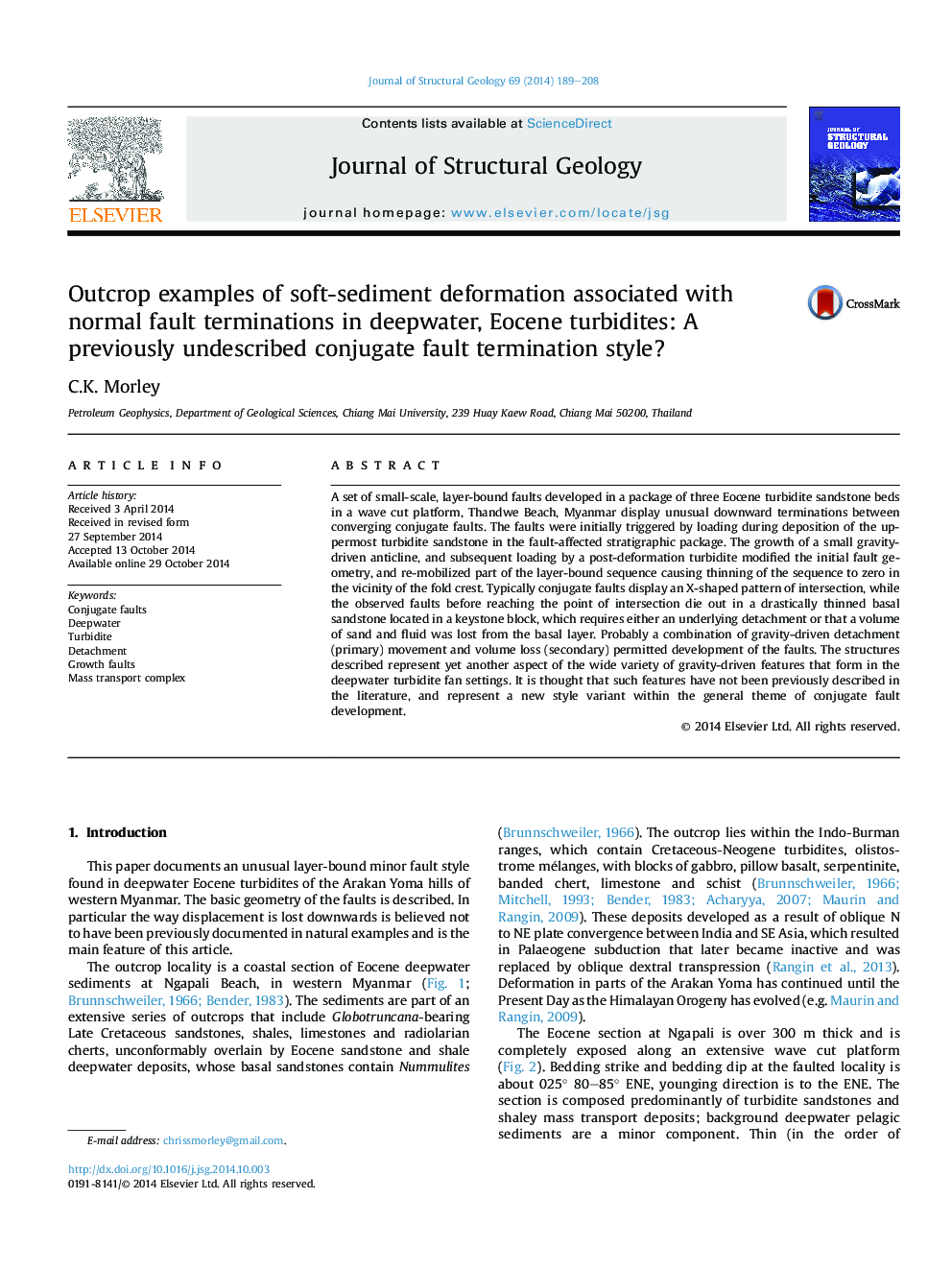| Article ID | Journal | Published Year | Pages | File Type |
|---|---|---|---|---|
| 6444849 | Journal of Structural Geology | 2014 | 20 Pages |
Abstract
A set of small-scale, layer-bound faults developed in a package of three Eocene turbidite sandstone beds in a wave cut platform, Thandwe Beach, Myanmar display unusual downward terminations between converging conjugate faults. The faults were initially triggered by loading during deposition of the uppermost turbidite sandstone in the fault-affected stratigraphic package. The growth of a small gravity-driven anticline, and subsequent loading by a post-deformation turbidite modified the initial fault geometry, and re-mobilized part of the layer-bound sequence causing thinning of the sequence to zero in the vicinity of the fold crest. Typically conjugate faults display an X-shaped pattern of intersection, while the observed faults before reaching the point of intersection die out in a drastically thinned basal sandstone located in a keystone block, which requires either an underlying detachment or that a volume of sand and fluid was lost from the basal layer. Probably a combination of gravity-driven detachment (primary) movement and volume loss (secondary) permitted development of the faults. The structures described represent yet another aspect of the wide variety of gravity-driven features that form in the deepwater turbidite fan settings. It is thought that such features have not been previously described in the literature, and represent a new style variant within the general theme of conjugate fault development.
Related Topics
Physical Sciences and Engineering
Earth and Planetary Sciences
Geology
Authors
C.K. Morley,
